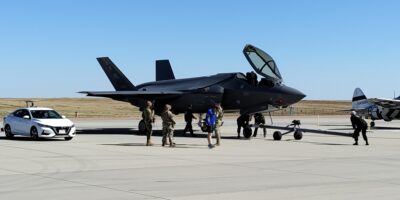Blue Angels in Colorado Springs
Blue Angels in Colorado Springs
The U.S. Navy Blue Angels are a flight demonstration squadron known for thrilling airshows. Founded in 1946, the Blue Angels have performed for millions over the decades, demonstrating the prowess of naval aviation. Visitors to airshows where the Blue Angels perform witness high-speed maneuvers and tight formations. When the Blue Angels come to Colorado Springs, the excitement in the city grows palpable. Located near the Air Force Academy, Colorado Springs is accustomed to aircraft displays, but the arrival of the Blue Angels is always a special occasion.
The Performers
The Blue Angels team is composed of navy and marine corps aviators. The squadron uses the F/A-18 Hornet, showcasing its agility and speed. Team members are highly skilled pilots with extensive experience. Selection for the team is competitive. Pilots typically have at least 1,250 tactical jet flight hours. Each pilot on the team serves for a two to three-year period. During this time, they conduct more than 70 shows at 34 locations annually. The precision and talent required to execute complex aerial maneuvers are a testament to the pilots’ training and expertise.
History and Legacy
The Blue Angels were established just after World War II. Their purpose was to maintain public interest in naval aviation and demonstrate naval air power. The team’s original planes were the F6F Hellcats. Over the years, aircraft like the F9F Panthers, F-4 Phantoms, and A-4 Skyhawks were used. In 1986, the Blue Angels adopted the F/A-18 Hornets, which they continue to fly today. The Blue Angels’ legacy is not only theirs to maintain, but also something for all armed services personnel to share. By carrying out complex and dangerous maneuvers, they convey the dedication and skill that goes into serving in the military.
Highlights of the Show
Spectators at a Blue Angels airshow experience a mix of thrill and awe. The show features solo performances and team maneuvers. The Diamond formation, performed by four jets, is a crowd favorite. It involves flying in tight proximity at high speeds. The solo pilots showcase high-performance turns and loops. The Sneak Pass surprises the unprepared with a low approach at incredible speeds. The performances highlight both the capabilities of the aircraft and the pilots. Audiences are also introduced to the personnel involved in crew support, emphasizing teamwork off the pilots’ stage.
Key Maneuvers
- Diamond Formation: A tight-knit display of four aircraft flying just inches apart.
- Opposing Knife-Edge Pass: Two aircraft pass each other while flying wingtip to wingtip.
- Sneak Pass: An aircraft approaches at high speed from a concealed angle, often surprising viewers.
- Vertical Roll: An impressive upward climb followed by rolls.
- Delta Formation: All six aircraft form an arrowhead-shaped arrow in the sky.
Inside Look: Preparation and Training
Before even performing any maneuvers before a crowd, the team spends hundreds of hours practicing. Preparations start well before the airshow season begins. Winter training is crucial, taking place in warmer locations like California or Florida. Sessions often last six days a week, refining their skills and solidifying teamwork. Each maneuver is practiced repeatedly to ensure precision. Pilots and crew must also conduct ground work, ensuring all safety checks are thoroughly completed. Communication between team members is paramount, providing the backbone for their in-air coordination.
Educational Outreach
Apart from performing, the team engages in educational outreach. They visit schools and interact with the community to inspire future aviators and engineers. The team shares insights into life in the navy and marine corps, encouraging interest in STEM fields. Children get firsthand stories from pilots about their experiences in the sky. For many, these interactions spark a lifelong interest in aviation and military service. The Blue Angels provide a vital link between the military and civilian communities, fostering goodwill and understanding across sectors.
Impact on Colorado Springs
Colorado Springs prides itself as a military-friendly city. The presence of various armed forces installations affirms its strategic importance. When the Blue Angels visit, Colorado Springs benefits significantly. The airshow brings together diverse community members. It also attracts tourists, boosting the local economy. Hotels, restaurants, and other businesses experience increased patronage during airshow season. Local media covers the event extensively, further raising Colorado Springs’ profile as a destination for aviation enthusiasts.
Colorado Springs provides a perfect backdrop for aerial displays. The stunning vistas of the Rocky Mountains enhance the visual spectacle. This scenic beauty combined with ideal weather conditions often results in a memorable experience for attendees.
Environmental and Safety Considerations
Operating efficiently while minimizing environmental impact is always a challenge. The use of military jets requires significant fuel and care must be taken to ensure noise concerns are addressed. Careful planning goes into airshow execution to mitigate these aspects. Safety is paramount. Thorough risk assessments are conducted before each performance. The FAA collaborates with the Blue Angels to ensure all regulations are followed. Attendee safety is also prioritized through clearly marked viewing areas and emergency procedures.

